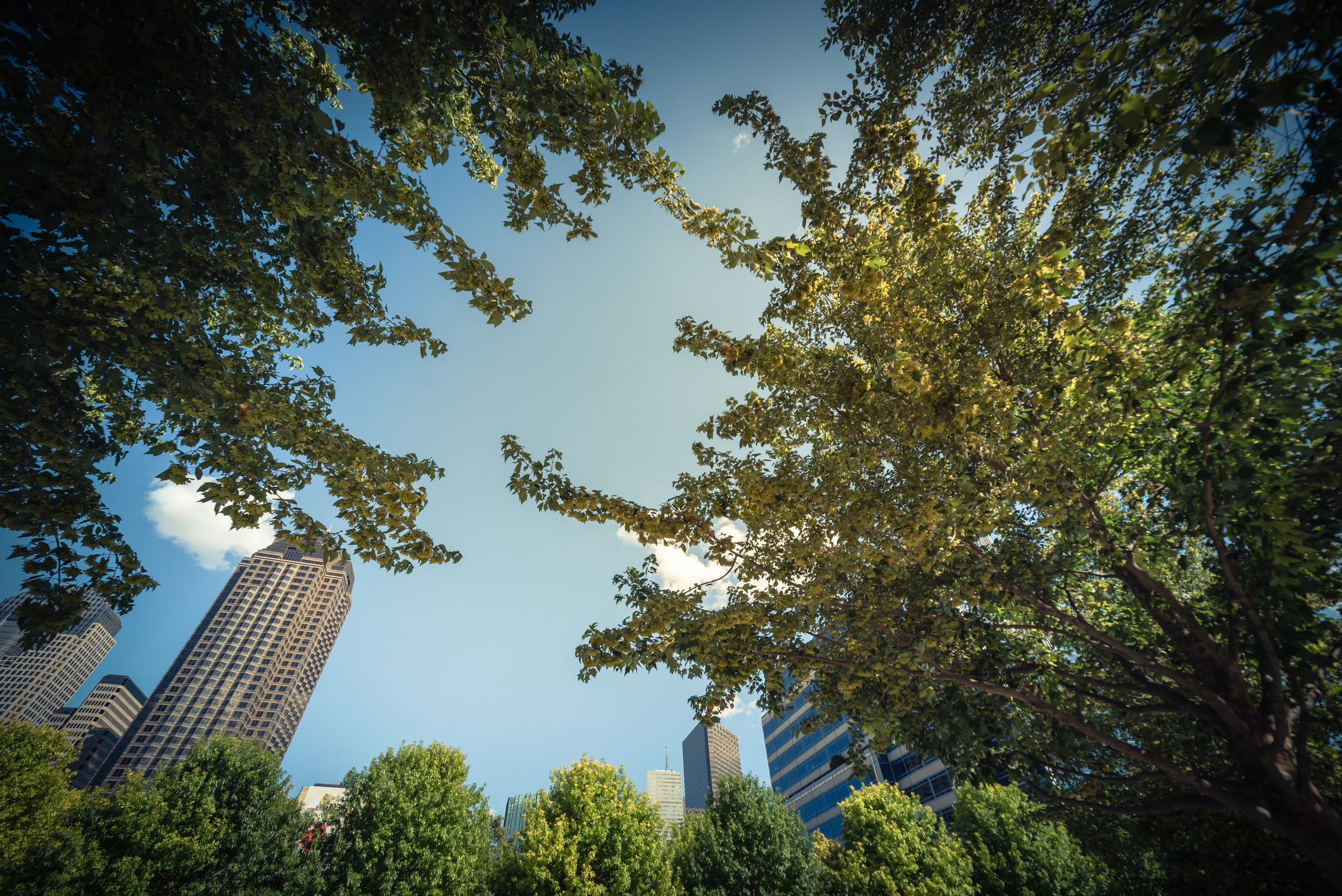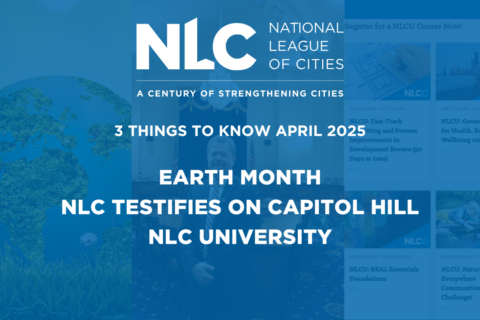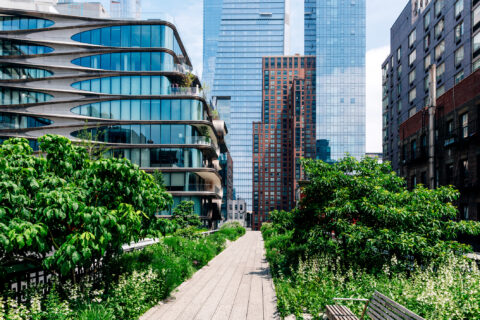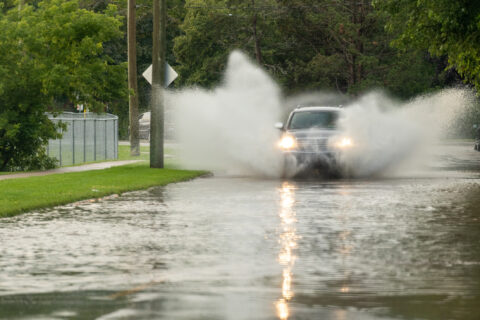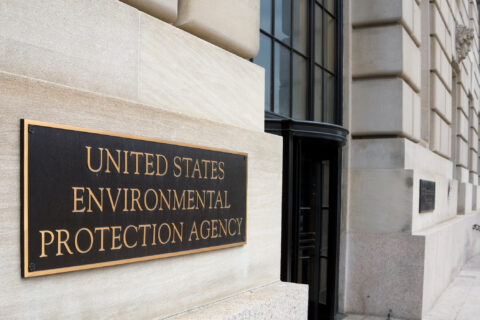Co-authored by Anna LaCombe, Policy Research Intern, Smart Surfaces Coalition
The need for tree canopy is heating up. Across the country, cities, towns and villages are grappling with extreme heat because structures and surfaces, such as buildings and roads, absorb and re-emit the sun’s heat more than vegetated landscapes do. This phenomenon, called an urban heat island (UHI), creates daytime temperature discrepancies in urban areas that range from one to seven degrees hotter than outlying areas. Although this difference may seem small, it is a matter of life and death. In fact, people living in cities with fewer trees experience greater rates of illness and death from heat waves. Extreme heat incidences in areas with poor tree coverage also correlates with higher energy consumption and higher levels of air pollution.
With this problem at hand, many municipalities continue to celebrate Arbor Day by participating in the Arbor Day Foundation’s Tree City USA program. However, tree canopy can also be thought of as one solution in a larger set of heat mitigation and stormwater management strategies: Smart Surfaces.
What is a Smart Surface?
Smart Surfaces are horizontal nature-based and nature inspired infrastructure interventions that include reflective (cool) roofs and pavements, porous and permeable pavements, green roofs, solar PV, trees and combinations of these surfaces. When deployed together, Smart Surfaces can substantially mitigate both extreme heat and urban flooding, reduce energy burdens, improve public health and save municipalities money among other benefits.

The Power of Trees
There are an estimated 5.5 billion trees in urban areas (PDF) in the United States. These trees provide a plethora of benefits for the surrounding urban ecosystem and community. Trees counteract the vast expanses of dark-colored pavement that dominate cities by providing shade and emitting water vapor, cooling the air (PDF). The ability of trees to decrease heat-related illnesses and death — as well as improve air quality that can reduce respiratory diseases — is vital as municipalities combat public health crises associated with more frequent heat waves and poor air quality. Planting and protecting trees, in combination with cool roofs and paving materials, was found to reduce heat deaths by 22 percent in Dallas, Texas (PDF).
A stronger canopy can also play a vital role in carbon sequestration, help reduce stormwater runoff (a large tree can retain 166 to 332 gallons (PDF) of water), lower utility bills by reducing HVAC energy consumption and serve as a habitat for birds, insects and small mammals. More neighborhood tree cover is linked to improved health outcomes (PDF), and urban street trees have been shown to be associated with improved pedestrian safety.
New Resource Alert: Mitigating Extreme Heat and Managing Stormwater with Trees
The Smart Surfaces Coalition has launched a Smart Surfaces policy resource (PDF) on mitigating extreme heat and managing stormwater with trees. This resource, designed to help policymakers and community advocates seeking to shape policy decisions, provides a menu of policy options, recommendations and resources, along with policy language and examples from cities across the country. Here are three top recommendations from the resource that local officials can implement today to strengthen current and future canopies in their community.
Below, explore three top recommendations from the resource that local officials can implement today to strengthen current and future canopies in their community.
Recommendations to Strengthen Your Community’s Tree Canopy
1. Maximize the Role Trees Play in Enhancing Resilience and Health
Strategic tree planting offers an excellent opportunity to advance health in communities. Aside from the respiratory benefits of trees, access to green spaces and trees also promotes mental health benefits, such as reduced stress, anxiety and depression. Trees play a central role in combating public health challenges in Columbus, OH’s Urban Forestry Master Plan (PDF). The plan emphasizes a lack of canopy as a central threat to their community’s health, causing poor air quality, high infant mortality rates and elevating chronic conditions, such as diabetes. The city works to rectify this by strategically identifying and prioritizing neighborhoods with high need and low coverage to ensure that all residents live in a healthy, vibrant and safe community. As cities target locations of tree plantings, it is important to consider which tree species are likely to thrive in future conditions, such as a warming climate.
2. Use Zoning to Enhance Tree Preservation and Expansion
Municipal zoning can shape the distribution and extent of a city’s tree canopy and dictates future plantings. Developing overlay zones or districts to target specific areas in cities for additional tree-related requirements or incentives to encourage property owners to go beyond minimum preservation requirements are ways for cities to realize their canopy goals. Salem, VA (PDF) uses the Urban Forest Overlay District to “increase the number and size of trees in new development” by requiring the use of specific tree species per acre, interior parking lot, and along the street in designated areas. Other cities, like Lakewood, WA and Erie, CO, are providing incentives to property owners who voluntarily preserve trees beyond minimum requirements. Examples of incentives for tree preservation or planting include height bonuses, flexibility on design standards, reduced or eliminated parking minimums and altered setback distances.
3. Address Financing Needs for Long-Term Maintenance
Creating immediate and ongoing maintenance strategies and funding mechanisms are essential for tree canopy vitality. One study (PDF) that quantified the benefits of municipal trees in California found that for every dollar spent on tree maintenance, $5.82 were garnered in benefits in the form of energy savings, carbon dioxide removal, air pollutant uptake and release, rainfall interception and property values. Financing tree care, however, presents a consistent challenge for cities. Examples of revenue generation include taxes, exactions on specific properties, bonds and permit review fees. The City of Oakland, CA’s, Urban Forest Plan (PDF) explores avenues to pursue a blended funding stream for maintenance, such as through fees, a Tree Fund, bonds, carbon financing, grants and more.
Explore Other Tree Canopy Tools and Resources
- Smart Surfaces Coalition’s Smart Surfaces Policy Tracker can help you discover ordinance language from peer cities, compare regulatory metrics and understand the landscape of Smart Surfaces policy in the U.S. Stay tuned for an updated and official launch of this tool in the upcoming months.
- i-Tree delivers current, peer-reviewed tree benefits estimation science from the USDA Forest Service to users with free tools as support.
- U.S. Forest Service’s Climate Adaptation Actions for Urban Forests and Human Health (PDF) compiles nature-based solutions from peer-reviewed research to guide climate planning and activities for urban forest management.
- Created by American Forests, the Tree Equity Score prioritizes human-centered investments by measuring how well the benefits of urban tree canopy — such as job creation, dollars saved, pollution reduction and heat mitigation — are reaching those who are most vulnerable. The platform includes case studies, implementation guides and worksheets to help communities build their capacity for urban forestry.
- Opportunities for free trees: Neighborhood Forests partners with schools, libraries and youth groups to distribute trees at no cost.
- The Green Infrastructure Center’s Trees and Stormwater Codes and Ordinances tool helps municipalities assess the ability of their urban forest to contribute to stormwater management.
- The Morton Arboretum’s Chicago Region Trees Initiative builds municipal and civic capacity to support and care for the planting of trees. Free resources include an ordinance builder tool, which draws sample components and language from existing ordinances.

Share Your Tree Maintenance Success Story
Although finance mechanisms for tree plantings are well documented, research and success with financing for long-term tree maintenance remains limited. If your municipality has a tree maintenance success story or an innovative tree maintenance financing approach, share your story with NLC’s Sustainability & Innovation team.
